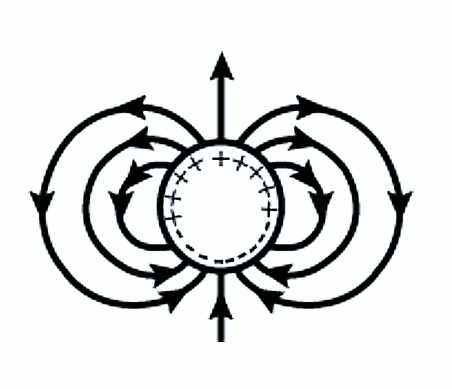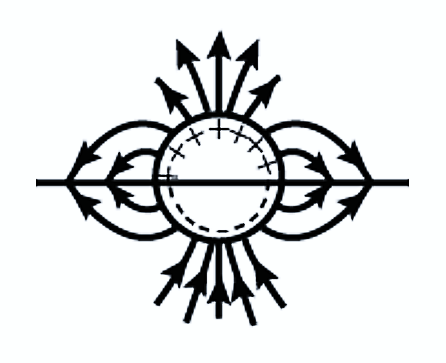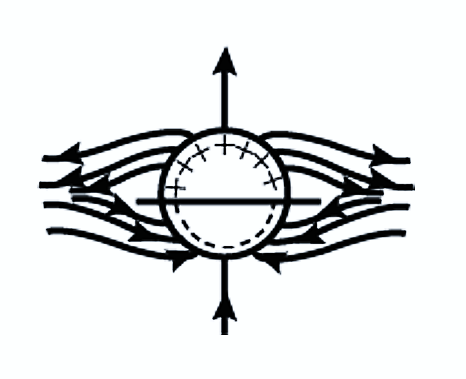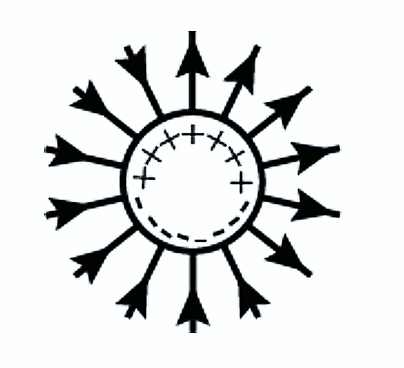
A long cylindrical shell carries positive surface charge
(figures are schematic and not drawn to scale)
A.

B.

C.

D.





Answer
477.3k+ views
1 likes
Hint: Electric field lines can be defined as the imaginary lines propagating through space. No charge is enclosed in a long cylindrical shell. We know, if there are no charges enclosed then no electric field lines will be generated. Also, the electric field lines always start at a positive charge and end at a negative charge. This basic information can be used to answer the given question.
Complete answer:
There is no charge enclosed inside a cylindrical shell. Hence, the electric field inside a shell will be zero. Thus, there will be no electric field lines inside. It is given that the shell carries positive surface charge
Thus, the correct answer is option A.
Note:
To solve these types of questions, students must have clear knowledge about electrostatics. Students should know about the properties of electric field lines. The electric field lines are always perpendicular to the surface charge. The number of field lines is directly proportional to the magnitude of charge. If there is a single positive charge then the electric field lines end at infinity and if there is a single negative charge then the electric field lines start at infinity.
Complete answer:
There is no charge enclosed inside a cylindrical shell. Hence, the electric field inside a shell will be zero. Thus, there will be no electric field lines inside. It is given that the shell carries positive surface charge
Thus, the correct answer is option A.
Note:
To solve these types of questions, students must have clear knowledge about electrostatics. Students should know about the properties of electric field lines. The electric field lines are always perpendicular to the surface charge. The number of field lines is directly proportional to the magnitude of charge. If there is a single positive charge then the electric field lines end at infinity and if there is a single negative charge then the electric field lines start at infinity.
Latest Vedantu courses for you
Grade 10 | MAHARASHTRABOARD | SCHOOL | English
Vedantu 10 Maharashtra Pro Lite (2025-26)
School Full course for MAHARASHTRABOARD students
₹33,300 per year
Recently Updated Pages
Master Class 9 General Knowledge: Engaging Questions & Answers for Success

Master Class 9 English: Engaging Questions & Answers for Success

Master Class 9 Science: Engaging Questions & Answers for Success

Master Class 9 Social Science: Engaging Questions & Answers for Success

Master Class 9 Maths: Engaging Questions & Answers for Success

Class 9 Question and Answer - Your Ultimate Solutions Guide

Trending doubts
Give 10 examples of unisexual and bisexual flowers

Draw a labelled sketch of the human eye class 12 physics CBSE

Differentiate between homogeneous and heterogeneous class 12 chemistry CBSE

Differentiate between insitu conservation and exsitu class 12 biology CBSE

What are the major means of transport Explain each class 12 social science CBSE

Why is the cell called the structural and functional class 12 biology CBSE




